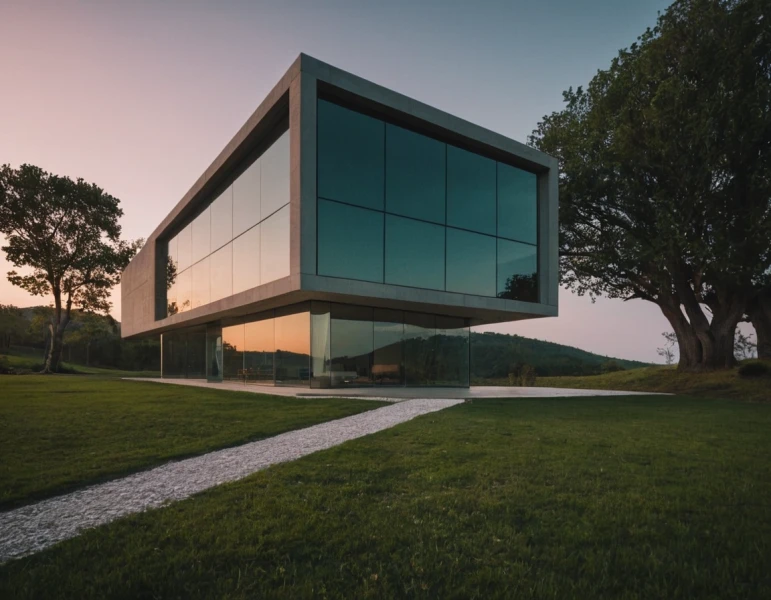Educa UNIVERSITY|ART AND ARCHITECTURE
Architecture: much more than building structures
Related Masters
Architecture: much more than building structures
The architecture.... That word that has so much weight and meaning, and not only for those of us who live surrounded by buildings and monuments, but for those who, like me, have had the privilege of living it from the inside. Now, when I talk to you about architecture, I don't mean simply laying bricks one on top of another, but to an art, a science and a creative act that goes far beyond what many imagine.
What is architecture?
Architecture, in short, is the art and technique of designing and constructing buildings. It is a field that combines technical knowledge with creativity, and has evolved with cultures and technologies over time. From the imposing temples of the Greeks and Romans to the modern steel and glass structures of today, every architectural work tells a story.

A story that combines aesthetics, functionality and a deep understanding of space.
But, let me go one step further. Architecture is not just about building something beautiful. It has to do with solving problems. It has to do with how we inhabit the world and how the structures around us shape our daily experience. And yes, there are basic principles that every architect must follow: utility, durability and beauty, what we know as the Vitruvian triad. Vitruvius, that great Roman architect, made it clear centuries ago: if it does not meet these three conditions, it is not good architecture.
Fundamental principles of architecture
Unity and contrast are two of the most important principles an architect must consider. Unity seeks to create harmony in the design, where all parts of the building feel connected and form a coherent whole. Meanwhile, contrast adds dynamism. It's that wow feeling you get when one part of the structure stands out or breaks with symmetry in an interesting way. Together, these principles create that visual magic.
Architecture also involves balance. Imagine a building where all the parts are balanced in size and shape, which creates a sense of stability. But you know what's fascinating? That not all balances are symmetrical. The asymmetry also plays an important role. Sometimes breaking the rules can create more exciting and memorable designs.
History of architecture: a look at its evolution
Now, if we look back, we can see that every historical era left its mark on architecture. From the towering pyramids of Egypt to modern high-rises, each style reflects the technology, values and culture of its time.
During the Renaissance, figures like Alberti and Vitruvius defined the basis of modern architecture with their focus on proportion and balance. But, in the 20th century, came movements like functionalism, which taught us that form must follow function. That is, it's not just about how a building looks, but how it works for those who use it.
The modern movement brought with it innovations like reinforced concrete and steel, which allowed the construction of skyscrapers and other bold structures that previously seemed impossible. Think of the Empire State Building or the works of Le Corbusier. These visionaries not only changed how we build, but how we think about the spaces we live in.
The impact of technology and sustainability on architecture
Technology has revolutionized architecture in ways we could never have imagined. Today, thanks to tools such as virtual reality and 3D modeling, architects can visualize their projects before the first stone is laid. Not only that, 3D printing and artificial intelligence are pushing the boundaries of what is possible.
Also, sustainability has become a fundamental pillar in architectural design today. Today, architects are not only concerned with creating buildings that are visually appealing and functional, but also with minimizing their environmental impact. Ecological materials, renewable energy and energy efficiency are terms that have become essential in the vocabulary of every modern architect.
The power of design in our daily lives
Don't get me wrong. Architecture is not just for grand monuments and public buildings. It's everywhere. The house you live in, the park you frequent, even the office you work in, all were designed by someone who took into account how those spaces would affect your daily life.
And this is where the true importance of architecture lies: in its ability to influence our emotions and well-being. A poorly designed building can make you feel trapped, while a well-thought-out one can give you a sense of peace and freedom. The natural light, the ventilation, the use of colors and materials can have a profound impact on how we feel in a space.
Conclusion
Throughout my life, I have had the opportunity to see how architecture has changed the world, and how it has changed the way I see it. It's so much more than just building something functional or beautiful; it's about creating spaces that resonate with people, that enhance our lives and make us feel like we are part of something bigger.
Next time you enter a building or walk down a street, take a moment to observe. Notice the details, how spaces connect and how everything seems to work together. That's the real magic of architecture.
It's the real magic of architecture.
Faculties
Trainings
The faculties embrace diverse academic disciplines and fields of study, opening doors to new perspectives and exploring different spheres of wisdom in a constantly evolving world.














